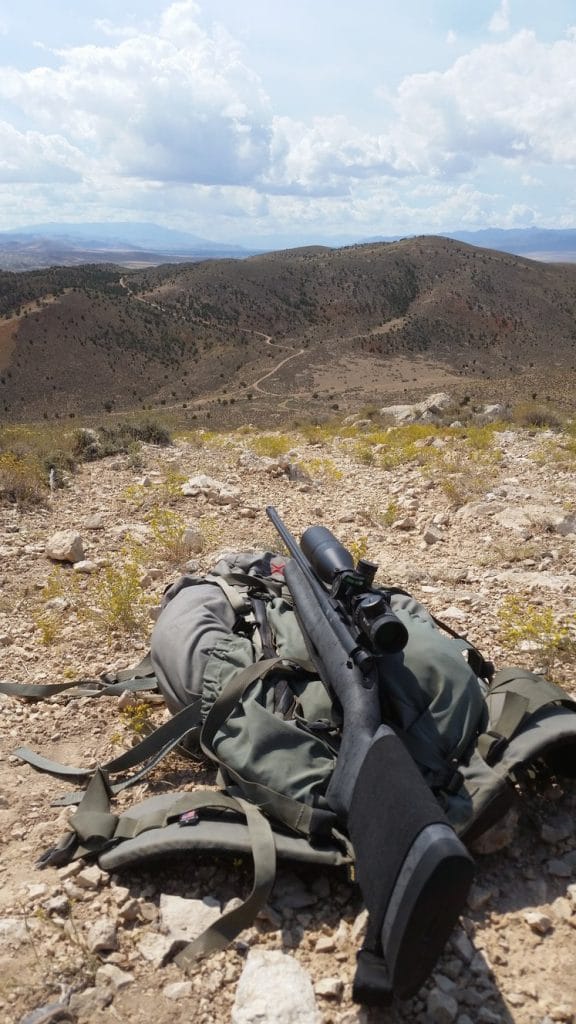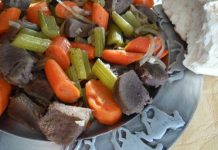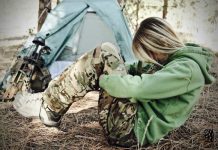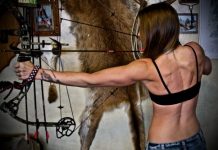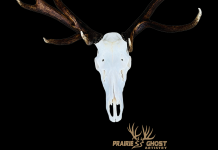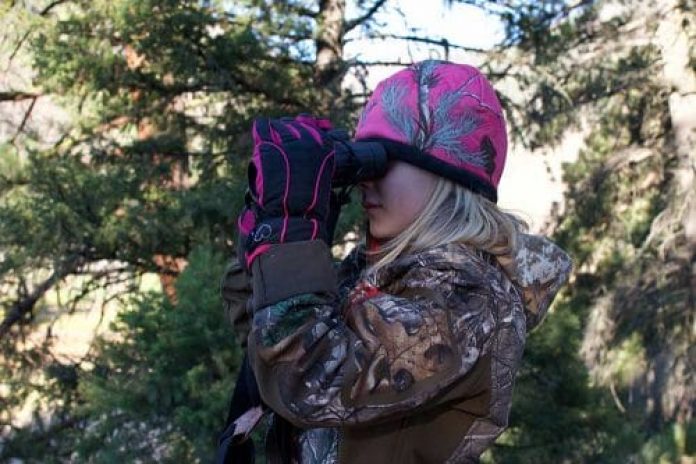
Budget vs Premium has become a rather heated, multi-pronged debate in the outdoor world today. The advancements in technology has brought with it a flood of advanced hunting gadgets. From clothes to optics, weapons and gear, the entire market has been blessed with new creations that past generations never dreamed of. All of them claim to make the consumer a more successful hunter: rifles with max effective ranges of over 1,000 yards, optics with near perfect clarity, and clothing that makes the wearer both invisible to game and impervious to the elements. Advertisements, pro staffers, TV show hosts, and even average consumers swear that their gear is the key to success, but is it?
Is there a point of diminishing returns when buying increasingly expensive gear? Are we better off spending thousands of dollars on actual hunting experiences? There are those on both sides of the aisle who will not be swayed. Throughout this article, I’m will try to approach the debate as scientifically as possible. What I will share is my experience from testing, destroying, and buying thousands of dollars worth of gear, clothing, optics, and weapons. I won’t cover everything, but instead focus on four of the major types of gear that can be had at a budget or a premium: clothing, packs, optics, and rifles.
Clothing
I really think past generations would laugh themselves silly at the way some modern hunters feel about their clothing. Hunting clothing has become as much a fashion statement as a practical choice to some. The real allure of expensive hunting clothing should be its performance in the field. Is it durable? Does it handle bad weather conditions well? Do the 12-ounce puffy jackets and rain jackets keep the user warm and dry despite the conditions? Is it going to allow me to hunt longer and more effectively? Does the camo pattern render the hunter nigh invisible in any terrain?
In my experience, technical hunting clothing enjoys great advantages over budget clothing. Materials like polyester, spandex, merino wool, hydrophobic down, synthetic insulation, nylon, and other advanced textiles are just better at dealing with the elements. Well designed pants are more comfortable to hike in, truly waterproof raingear is the difference between getting soaked and staying dry, and an advanced puffy jacket will keep a hunter comfortably warm in temperatures disproportionate to its weight. Budget hunting clothing is heavier, cotton is miserable when wet, and cheap rain gear eventually leaks or soaks in bad conditions.
These are just the scientific facts, but do they justify the cost? That is an individual question. Personally, I never imagined paying a premium for hunting clothing until I started bivy hunting. When most of my hunts occurred from a truck or cabin, my budget gear never left me wanting more. My first use of merino base layers, premium packable rain gear, technical pants, and a down puffy jacket on backpack hunts convinced me that premium clothing was for me. Continued testing confirmed my preference. These preferences have come from testing gear to failure; if it fails, it gets replaced. In the end, I’m left with gear that I know will allow me to stay on the mountain and hunt effectively in any condition.
Camouflage patterns, I believe, are a matter of personal preference, not life and death. While I believe that a good outline disrupting pattern makes an appreciable difference in some situations, it doesn’t determine what I buy. In the end, how much is spent on clothing should be determined by individual wants and needs. Backpack and bivy hunts definitely demand better gear. Day hunts from the truck may not. Either way, technical hunting clothing will outperform budget clothing every time; whether or not it is worth the cash is up to you.
Packs
Packs are a matter of great personal pride, and for good reason. They really are a lifeline on the mountain and must perform. When I first set out to buy a proper hunting backpack, I spent weeks following Aron Snyder’s reviews on a hunting forum. The amount of packs on the market and the myriad of different features blew my mind. It never occurred to me that there would be so much to choose from. Finally, in accordance with my 17 year-old budget, I spent $100 on an Eberlestock X2A1 that was salvaged from a warehouse fire. I loved it for years, packing out several deer and a good couple hundred pounds of sheds with it. Until I started extended backpack hunts I never felt the need to upgrade.
When I finally set out to find my perfect pack it was a long process. I spent two years and nearly two thousand dollars before I was satisfied. Sizing, performance, accessories, function, durability, and comfort under a load all came into play. After hundreds of miles, many heavy pack outs, and lots of cursing and frustration I became a pack purist. Some people will vehemently disagree with me on this subject. Many will claim that their $200 pack will do anything a $600 will do. But when the hip belt gets snugged up and the boots hit the trail with a 60+ pound load, premium packs are worth every single penny.
There was a point in time where I would never have imagined spending over $300 on a pack. I thought that there was no way a $500-$900 pack could be that much better. After all, 100 pounds is 100 pounds, right? Truly, high-end packs from companies like Kifaru, Stone Glacier, Exo Mountain Gear, Paradox, and Mystery Ranch are worth their weight in gold. Even if you aren’t ready to spend a rifle sized chunk of cash on a pack just yet, try one out (with some sandbags) next time you get a chance. You’ll probably hate me for it, because I can just about guarantee it will make you want one.
Optics
Hype and brand imaging have sadly overtaken the optics market. Optical quality is too often judged by brand name rather than optical performance. Given the importance of optics, I feel we owe it to ourselves to have the absolute best possible. When it comes right down to it, quality optics just aren’t easy or cheap to manufacture. This is another piece of equipment I learned about one mistake at a time. Now, I’ll never say that it’s impossible to be successful with budget optics. I used a budget pair of binoculars for years, harvesting many deer and glassing up dozens of shed antlers. It wasn’t until I looked through a friend’s binoculars (which cost the same, by the way) that I realized what I was missing.
My next pair of binoculars cost double what the first did and were a quantum leap forward. Just months later, I bought a pair of 15×56 Euro HD binoculars and was introduced to the world of flouride crystal glass. I promptly upgraded my compact binoculars to the same brand and sold my supposed “ultra HD” spotting scope, which no longer lived up to my expectations. The following is what I learned about purchasing optics.
Under $1,000 (for scopes, spotting scopes, and binoculars) the general trend is that quality greatly increases as price increases, but that isn’t always the case.
The only way to get the most for your money is to test them side by side. Ignore brand names and advertising. Set them up on tripods side by side. Pick a small detail (like the hair on top of an elk mount’s head, or a detailed sign in the shadows across the store) and focus every optic you are testing on it. Compare the image in the center, then closer and closer to the edge of the field of view. Pay attention to both clarity and color fidelity. It may be surprising just how much better some options will be in the same price range if you spend thirty minutes or so picking out the differences. Over the $1,000 dollar mark the concept is the same, but more must be spent to significantly increase optical quality. I am devout in my belief that optics are a horrible place to skimp. Spend as much as practically possible without a second mortgage, and test everything in the established price range side by side before buying.
Rifles
Rifles have come just as far as the rest of the hunting world, especially in the last ten years. The birth of the semi-custom rifle, and an increasing number of good gunsmiths gives us many options for performance rifles. I think there are two main ways to look at a rifle’s performance: function and precision. Function includes the stock, trigger, action, magazine system, muzzle devices, and optics mounting. Custom rifles have significant advantages in all of these categories, as they can be tailored to the user’s exact preference with much higher quality components. Precision should be guaranteed, in my opinion, for any rifle costing over $1,500. In factory rifles accuracy can be a bit of a roll of the dice but most do quite well.
Modern manufacturing has greatly improved the quality of mass produced rifles. My current low budget rifle cost me only $425, and after installing a chassis it is a true .5 MOA rifle. Most rifles up to around $2,000 will shoot around or better than one MOA. Semi custom rifles, costing from $2,000 to $3,500 typically have around .5 MOA guaranteed. They generally have much higher quality components and outperform factory rifles overall. Custom rifles are for those who know exactly what they expect from a rifle and refuse to compromise. Every single detail can be determined by the customer, and precision will be guaranteed .5 MOA or better. Prices can range from $2500 up to over $10,000. There are several highly competent gunsmiths building rifles around the $3000 mark that mirror the performance and precision of rifles costing twice as much.
Before jumping into a custom rifle, take the time to find exactly what components work best for you. Do plenty of research to ensure the builder does quality work and backs it with good customer service. To answer the overarching question, is an extra $3000 or more worth spending on a rifle? It depends on what is expected and the budget of the individual. If guaranteed long-range performance is a requirement, a custom or semi-custom rifle is probably the only sure way to go. For more conventional ranges, a factory rifle will be adequate. In my opinion, a custom rifle is a very worthwhile investment. Even if a factory rifle will get the job done, a true custom rifle will always be the better tool in any situation.
As heated as the debate of budget vs premium gear may get, it actually demonstrates one of the greatest things about hunting. Hunting is for everyone, of all types of economic standing. The mountain is a great equalizer where the CEO and the average worker are forced onto level ground by Mother Nature. I believe that whether or not premium gear gives the hunter an advantage is dependent on the hunter, not just the gear. Thousands of dollars of gear sitting at home or in camp renders no benefit. On the other hand, advanced clothing, premium optics, truly well designed pack systems, and precision weapons allow determined DIY hunters to hunt longer, harder, and more efficiently. Certainly premium gear isn’t required to be successful; many of history’s greatest hunters came and went without it. But just as a brand new Mustang GT has advantages over a Model T, advanced gear has undeniable benefits.
My closing thought is this; remember the gear does not make the hunter. In the world of DIY hunting, success cannot be purchased with any amount of premium gear. It can only be earned, and that comes from inside the hunter, never from a sporting goods store.


